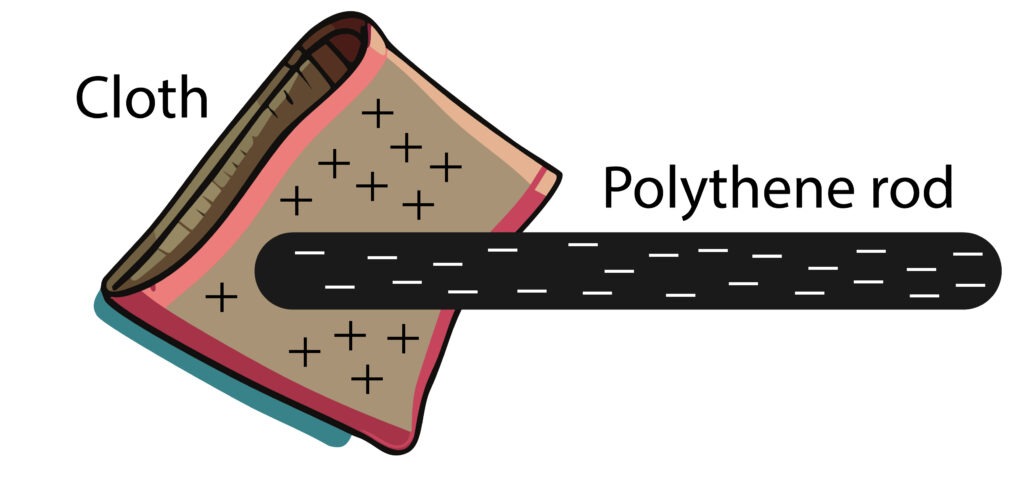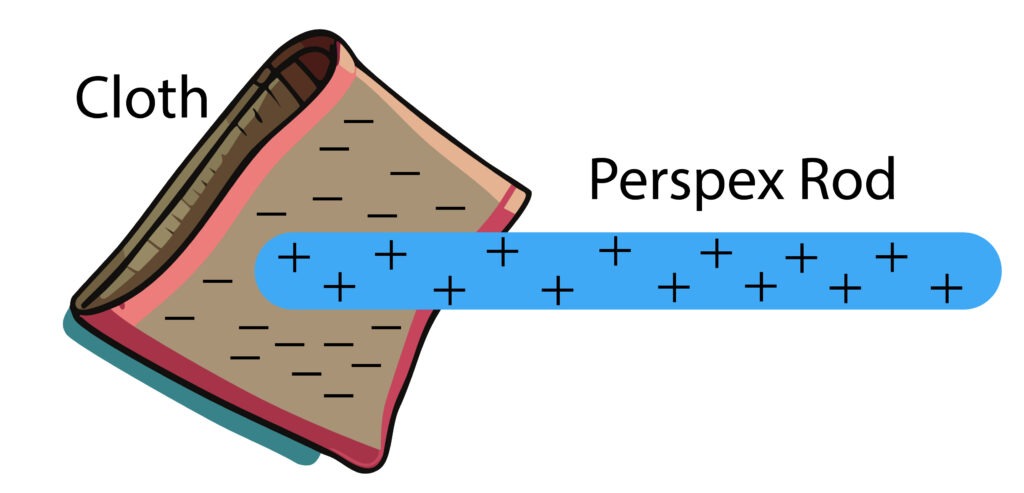AQA GCSE Static Electricity(Physics)
Static Electricity
Static electricity is the build up of electric charges on the surface of an insulator.
When some insulators are rubbed against each other, they can become electrically charged, this is because electrons move from one material onto another material.
Insulator materials contain atoms. We looked at atoms being electrically neutral on the static charges topic.
As the electrons move from one insulator to the other, the insulator that loses electrons will gain a positive charge and the one that gains electrons will develop a negative charge.
Polythene Rod and Cloth experiment

In the diagram above when the rod and cloth were rubbed together, electrons moved from the cloth, onto the rod. So the cloth gained a positive charge and the rod gains a negative charge.
Perspex rod and Cloth experiment

In the above diagram when the cloth is rubbed onto the perspex rod, electrons move from the rod onto the cloth. So the rod will gain a positive charge and the cloth will gain a negative charge.
Practice Questions
1.Define the term static electricity
2.Explain how some insulators can become electrically charged
3. Material X was rubbed against material Y. Material X gained electrons from Y.
State which material will have a
Positive charge overall:
Negative charge overall:
Absorption and Emission of EM Radiation
JJ Thomson and Plum pudding model
Ernest Rutherford and the Nuclear Model
Niels Bohr changing the Nuclear Model
Discovering the Proton and Neutron
Measuring radiation from radioactivity
Radiation types and properties
Random nature of radioactive decay
Radioactive contamination or irradiation
Hazards of contamination and irradiation
Studies on the effects of radiation on humans
Different half lives of radioactive isotopes
Nuclear Fission Chain Reaction
Writing nuclear fission equations
Drawing ray diagrams for a concave lens
Drawing Ray Diagram to produce a virtual image for a convex lens
Drawing ray diagram to produce a real image for a convex lens.
Specular and Diffuse Reflection
Seeing Coloured Objects Part 2
Viewing objects through coloured filters
Transparent, Translucent and Opaque